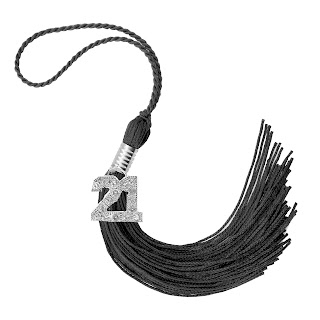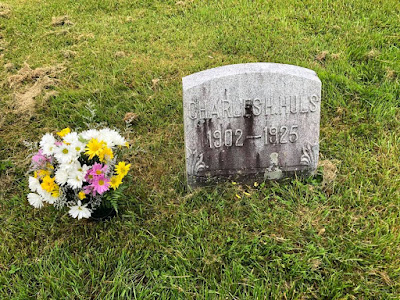I simply cannot imagine the pain grandpa Fred and his parents must have been facing as commencement week approached. Charley should have been there. Were his classmates thinking about him, or were they too excited for themselves to spare a thought for him? This article from May 25, 1925 The Lantern highlights the coming glories. 1925 Graduating Class Breaks All Records With 1700 Seniors
The total number of graduates for the year constitutes a record class for the University. Approximately 1200 students will be graduated June 16, figures show.
 |
| eBay.com |
At the recent August, December 1 and March convocations or quarterly* commencements, 500 students were graduated who are considered members of the present class. This makes a total of 1700 graduates for the class of 1925. The largest previous total for a single year was 1500.
The June class alone is larger than that of the combined graduating classes during the first 22 years of the University's life, and will swell the number of alumni to something like 18,000. The total for the year 1924-1925 is greater than that of all the years from 1878, when the first Ohio State class was graduated through 1903, or 26 years.
The College of Arts has the largest number of candidates for degrees with 201, followed by the College of Education with 188. The College of Engineering, including the department of applied optics, has the same number.
From the College of Agriculture 130, including 67 girls in home economics**, are scheduled to be graduates. The College of Commerce and Journalism which at present numbers 134 graduates, including 105 in business administration, 17 in journalism [18 if Charley had lived], and 12 in social administration.
One hundred and twenty-four people are eligible for degrees in the Graduate School. Nineteen of these, including one woman, are scheduled for the degree of Doctor of Philosophy, 86 for Master of Arts, and 18 for Master of Science.
Other colleges and their classes are: Medicine, 78; Law, 73; Pharmacy, 70; Dentistry, 22; Veterinary Medicine, 29; and Public Health Nursing, four.
The class exercises proper begin Sunday, June 14, with the baccalaureate services in the Gymnasium. "Class Day" will Be celebrated Monday, June 15, with the graduation exercises will be held at 10 a. m., Tuesday, June 16. Dr. William Lowe Bryan, president of Indiana University, will deliver the commencement address.
Charley should have been there.
* O.S.U. switched to the quarter system in 1922, which consisted of four 10-week sessions: fall, winter, spring, and summer. It went back to the semester system in Autumn 2012. A semester system consists of two 15-week terms: one in the fall (followed by a winter break) and one in the spring (followed by a summer break).
**It cracks me up that home economics is under the College of Agriculture.
-30-


























